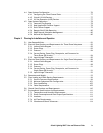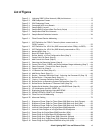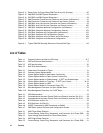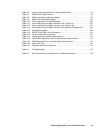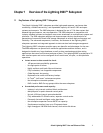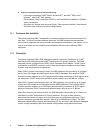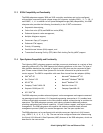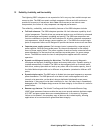Hitachi Lightning 9900™ User and Reference Guide 3
1.1.3 S/390
®
Compatibility and Functionality
The 9900 subsystem supports 3990 and 2105 controller emulations and can be configured
with multiple concurrent logical volume image (LVI) formats, including 3390-1, -2, -3, -3R, -9
and 3380-E, -J, -K. In addition to full System-Managed Storage (SMS) compatibility, the 9900
subsystem also provides the following functionality in the S/390
®
environment:
Sequential data striping,
Cache fast write (CFW) and DASD fast write (DFW),
Enhanced dynamic cache management,
Multiple Allegiance support,
Concurrent Copy (CC) support,
Enhanced CCW support,
Priority I/O queuing,
Parallel Access Volume (PAV) support, and
Transaction Processing Facility (TPF)/Multi-Path Locking Facility (MPLF) support.
1.1.4 Open-Systems Compatibility and Functionality
The Lightning 9900™ subsystem supports multiple concurrent attachment to a variety of host
operating systems (OS). The 9900 supports the following platforms at this time. The type of
host platform determines the number of logical units (LUs) that may be connected to each
port. Please contact Hitachi Data Systems for the latest information on platform and OS
version support. The 9900 is compatible with most fibre-channel host bus adapters (HBAs).
IBM
®
AIX
®
OS
Sun™ Solaris™ OS
HP-UX
®
OS
Compaq
®
Tru64™ UNIX
®
OS
Sequent
®
DYNIX/ptx
®
OS
SGI™ IRIX
®
OS
Microsoft
®
Windows NT
®
OS
Microsoft
®
Windows
®
2000 OS
Novell
®
NetWare
®
OS
Red Hat
®
Linux
®
OS
Compaq
®
OpenVMS
®
OS
The 9900 subsystem provides enhanced dynamic cache management and supports command
tag queuing and multi-initiator I/O. Command tag queuing (see section 4.5.1) enables hosts
to issue multiple disk commands to the fibre-channel adapter without having to serialize the
operations. The 9900 subsystem operates with industry-standard middleware products
providing application/host failover capability, I/O path failover support, and logical volume
management. The 9900 subsystem also supports the industry-standard simple network
management protocol (SNMP) for remote management from the open-system host.
The 9900 subsystem can be configured with multiple concurrent logical unit (LU) formats
(e.g., OPEN-3, -8, -9, -K, -E, -L, -M). The user can also configure custom-size volumes using
the Virtual LVI/LUN and LU Size Expansion (LUSE) features of the 9900 subsystem, which are
described in the next section.



